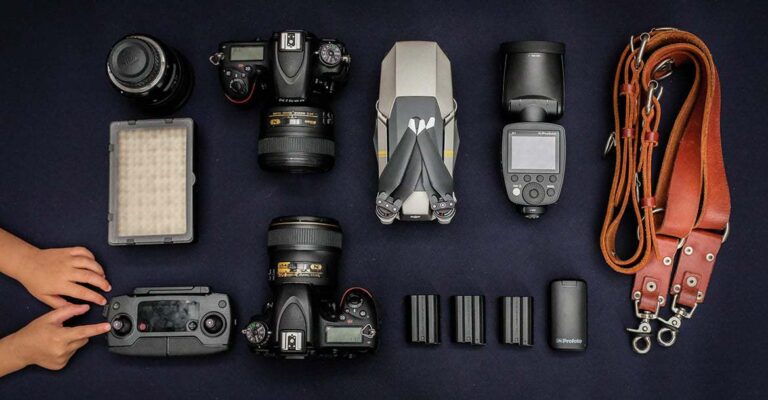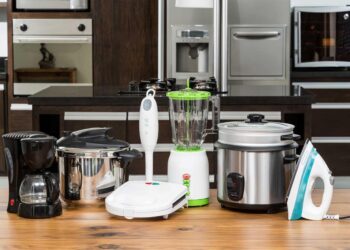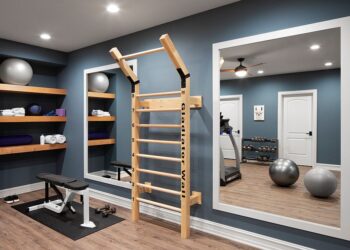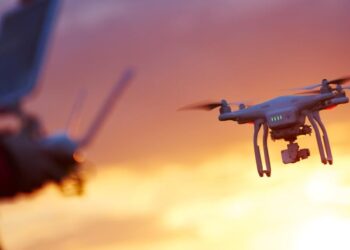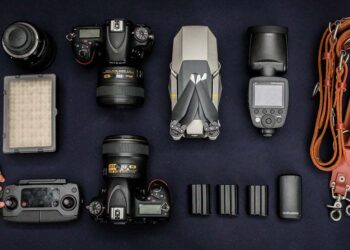In the captivating world of photography, the right equipment isn’t just a collection of tools; it’s an extension of the artist’s vision, empowering them to capture moments, tell stories, and create breathtaking images. For aspiring hobbyists and seasoned professionals alike, understanding and wisely investing in photography gear picks is crucial for unlocking creative potential and achieving stunning results. The rapid evolution of imaging technology constantly introduces new possibilities, from sharper lenses to smarter cameras and innovative accessories. This comprehensive article delves deep into the essential and trending photography equipment, exploring their functionalities, dissecting their benefits, and offering practical advice to help you build a versatile and high-performing kit tailored to your photographic journey. Prepare to enhance your craft and see the world through a new lens.
Camera Bodies

The camera body is the foundation of your photographic setup, housing the sensor, image processor, and controls that determine image quality and handling. The choice of camera body often dictates the lens ecosystem you’ll invest in.
A. DSLR Cameras
Digital Single-Lens Reflex (DSLR) cameras have long been the industry standard, known for their robust build, extensive lens ecosystems, and optical viewfinders. While mirrorless cameras are gaining ground, DSLRs still offer excellent value and performance.
- Optical Viewfinder: A key advantage of DSLRs is their optical viewfinder, which provides a clear, real-time view directly through the lens, without any electronic delay. This is often preferred by sports and wildlife photographers who need to track fast-moving subjects.
- Battery Life: Generally, DSLRs boast superior battery life compared to mirrorless cameras, making them ideal for long shooting sessions, especially in cold environments where battery performance can degrade quickly.
- Ergonomics and Durability: DSLRs are often designed with a substantial grip and a sturdy, weather-sealed body, offering comfortable handling for larger lenses and robust performance in challenging conditions. Many professional DSLRs are built to withstand heavy professional use.
- Lens Selection: The mature DSLR market offers an immense selection of lenses, both first-party (from Canon and Nikon) and third-party (from Sigma, Tamron, etc.), providing options for virtually any photographic need and budget.
- Sensor Sizes: DSLRs come with various sensor sizes:
- Full-Frame Sensors (FX for Nikon, EOS for Canon): Offer superior low-light performance, wider dynamic range, and shallower depth of field (more background blur), preferred by professionals for landscapes, portraits, and astrophotography.
- APS-C Sensors (DX for Nikon, EOS Rebel for Canon): Smaller sensors that provide a “crop factor” (typically 1.5x or 1.6x), effectively extending the reach of telephoto lenses, which can be advantageous for sports and wildlife photography on a budget. They are also more affordable and lighter.
B. Mirrorless Cameras
Mirrorless cameras are the fastest-growing segment of the camera market, offering compact designs, advanced technology, and increasingly robust lens lineups.
- Electronic Viewfinder (EVF): Mirrorless cameras feature an electronic viewfinder (EVF), which displays a digital image of what the sensor sees. This allows for real-time previews of exposure, white balance, and effects, making it easier to nail the shot in-camera. Advanced EVFs offer high resolution and refresh rates, minimizing lag.
- Compact Size and Weight: By eliminating the mirror box and optical viewfinder, mirrorless cameras are generally smaller and lighter than DSLRs, making them more portable and less conspicuous, ideal for travel and street photography.
- Advanced Autofocus Systems: Many mirrorless cameras boast sophisticated autofocus (AF) systems that utilize on-sensor phase detection for faster, more accurate, and more widespread AF coverage across the frame. Features like eye-tracking AF (for humans and animals) are particularly effective for portraits and dynamic subjects.
- In-Body Image Stabilization (IBIS): A significant advantage of many mirrorless cameras is in-body image stabilization (IBIS), where the sensor itself moves to counteract camera shake. This provides stabilization regardless of the lens used, benefiting low-light photography and handheld video recording.
- Video Capabilities: Mirrorless cameras generally offer more advanced video capabilities, including 4K and even 8K recording, higher frame rates, and sophisticated video features like log profiles for greater grading flexibility. This makes them dual-threat tools for content creators.
- Growing Lens Ecosystems: While newer, mirrorless systems (e.g., Sony E-mount, Canon RF, Nikon Z, Fujifilm X, Micro Four Thirds) are rapidly expanding their native lens offerings, with many adapters available to use DSLR lenses.
C. Medium Format Cameras
For photographers demanding the absolute highest image quality, medium format cameras offer significantly larger sensors than full-frame, delivering exceptional detail, dynamic range, and tonal rendition. They are typically used for commercial, landscape, and fine art photography.
Lenses
The lens is arguably more important than the camera body in defining the look and feel of your images. It dictates perspective, depth of field, and light-gathering capability.
A. Prime Lenses
Prime lenses have a fixed focal length, meaning they don’t zoom. This simplicity often translates to superior optical quality and wider apertures.
- Superior Sharpness and Image Quality: Without the complex moving parts of zoom lenses, prime lenses can be designed with fewer optical compromises, leading to sharper images, less distortion, and better control of aberrations.
- Wide Apertures: Primes typically offer wider maximum apertures (e.g., f/1.8, f/1.4, f/1.2). This allows for:
- Excellent Low-Light Performance: More light enters the lens, enabling faster shutter speeds in dim conditions, reducing motion blur and allowing for lower ISO settings (less noise).
- Beautiful Background Blur (Bokeh): A wide aperture creates a shallow depth of field, artfully blurring the background to make your subject stand out, highly desirable for portraits.
- Common Focal Lengths: Essential prime lenses often include a “nifty fifty” (50mm, often f/1.8 or f/1.4), a wide-angle (24mm or 35mm), and a portrait lens (85mm or 135mm).
Zoom Lenses
Zoom lenses allow you to change focal length without changing lenses, offering versatility and convenience, especially when speed is crucial.
- Flexible Framing: A single zoom lens can cover a range of focal lengths, allowing you to frame your shot quickly without physically moving or swapping lenses. This is invaluable in fast-paced environments like events, sports, or travel.
- Constant Aperture Zooms: Professional-grade zoom lenses often feature a constant maximum aperture (e.g., f/2.8 or f/4) throughout their zoom range, ensuring consistent exposure and depth of field regardless of focal length.
- Common Zoom Types:
- Standard Zoom (e.g., 24-70mm f/2.8 or f/4): A versatile lens for everyday photography, portraits, and landscapes.
- Telephoto Zoom (e.g., 70-200mm f/2.8 or f/4): Essential for sports, wildlife, and distant subjects, bringing them closer.
- Wide-Angle Zoom (e.g., 16-35mm f/2.8 or f/4): Perfect for landscapes, architecture, and interior photography.
- Image Stabilization (OS/VR/IS): Many zoom lenses, particularly telephotos, include optical image stabilization to counteract camera shake, allowing for sharper handheld shots at slower shutter speeds.
C. Specialty Lenses
Beyond standard primes and zooms, several specialty lenses offer unique creative possibilities.
- Macro Lenses: Designed for extreme close-up photography, allowing you to capture intricate details of small subjects like insects, flowers, or textures. They typically offer a 1:1 (life-size) or greater magnification ratio.
- Tilt-Shift Lenses: Used primarily for architectural photography, these lenses allow you to control perspective distortion (correcting converging lines) and manipulate the plane of focus for creative effects (e.g., miniaturization effect).
- Fisheye Lenses: Produce a highly distorted, ultra-wide-angle view with a characteristic curved horizon, used for creative effects, action sports, or capturing expansive scenes in a unique way.
Lighting Equipment
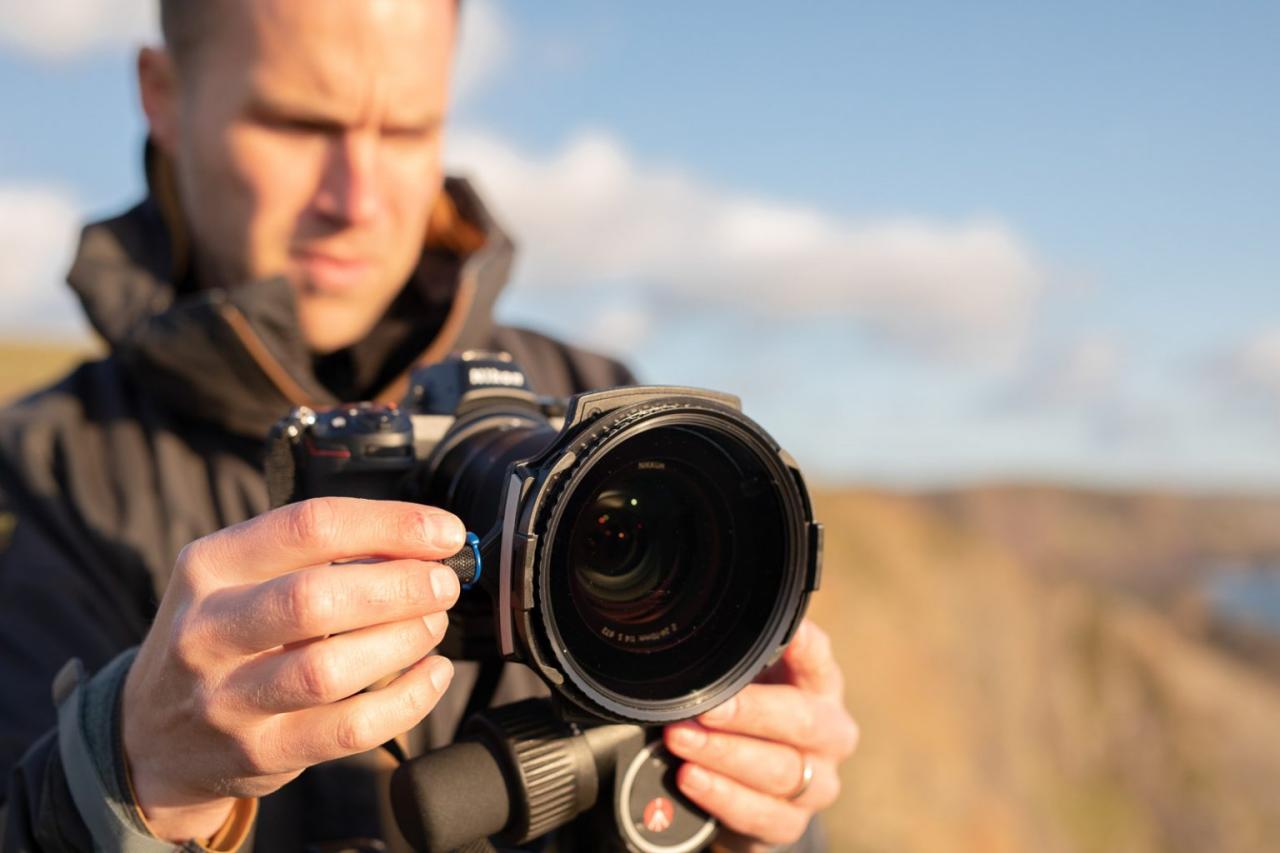
Photography is all about light. Controlling and shaping light is what separates a good photograph from a great one.
A. External Flashes (Speedlights)
An external flash, often called a speedlight or strobe, offers significantly more power and control than a camera’s built-in flash.
- Off-Camera Flash: The ability to use an external flash off-camera (with wireless triggers) allows for more creative and natural-looking lighting, preventing harsh shadows and flat lighting.
- Bounce and Diffusion: Speedlights can be bounced off ceilings or walls for softer, more flattering light, or diffused with small modifiers (e.g., softboxes, diffusers) for even light spread.
- High-Speed Sync (HSS) and TTL: Advanced features like High-Speed Sync (HSS) allow you to use flash at shutter speeds faster than your camera’s normal sync speed, ideal for overpowering the sun. Through-The-Lens (TTL) metering automatically sets flash power for correct exposure.
B. Studio Strobes and Monolights
For dedicated studio work or location shoots requiring powerful, consistent lighting, studio strobes or monolights are essential.
- Higher Power Output: Strobes offer significantly higher power output than speedlights, allowing for smaller apertures, lower ISOs, and greater lighting control, especially in bright ambient conditions or when lighting large areas.
- Modeling Lamps: Most studio strobes include a modeling lamp, a continuous light source that allows you to preview how the light will fall on your subject before firing the flash.
- Light Modifiers: Studio strobes are designed to work with a vast array of light modifiers (e.g., large softboxes, octaboxes, beauty dishes, strip boxes, reflectors, grids) that shape and direct light with precision.
C. Continuous LED Lights
Continuous LED lights are gaining immense popularity for their versatility, efficiency, and ability to be used for both still photography and videography.
- Constant Illumination: They provide constant, flicker-free illumination, making them easy to see and adjust the light as you shoot. This is particularly beneficial for video work, live streaming, or product photography.
- Color Temperature and Brightness Control: Many LED panels offer variable color temperature (from warm to cool) and dimmable brightness, allowing for precise control over the mood and look of your lighting.
- Low Heat and Portability: LEDs produce very little heat, making them comfortable to work with, and many portable options run on batteries, offering excellent flexibility on location.
D. Reflectors and Diffusers
Even without artificial light, reflectors and diffusers are indispensable for manipulating natural or ambient light.
- Reflectors: Bounce light back onto your subject, filling in shadows and adding sparkle. They come in various colors (silver for cool, gold for warm, white for neutral) and sizes.
- Diffusers: Soften harsh light (like direct sunlight) by scattering it, creating a more even and flattering illumination.
Camera Support and Stability
Camera shake is the enemy of sharp images. Proper camera support is vital for achieving crisp results, especially in low light or with long lenses.
A. Tripods
A sturdy tripod is essential for landscapes, long exposures, astrophotography, product photography, macro photography, and any situation where maximum sharpness and stability are required.
- Stability and Weight Capacity: Look for a tripod that is stable enough to support your heaviest camera and lens combination, with a good weight capacity rating. Carbon fiber tripods are lighter for travel, while aluminum offers good value.
- Head Type:
- Ball Head: Offers quick and fluid adjustments in any direction, popular for general photography.
- Pan-Tilt Head: Provides independent control over horizontal (pan) and vertical (tilt) movements, ideal for video and precise framing.
- Gimbal Head: Specialized for heavy telephoto lenses, allowing smooth tracking of moving subjects with excellent balance.
- Leg Sections and Height: Consider the number of leg sections (fewer sections generally mean more stability) and the maximum and minimum working height.
B. Monopods
A monopod offers a middle ground between handheld shooting and a tripod, providing vertical support without the bulk.
- Portability and Quick Setup: Ideal for sports, wildlife, and event photography where you need to quickly move and reposition. They offer crucial stability for heavy lenses without restricting movement.
- Stabilization: Reduces vertical camera shake, allowing for slightly slower shutter speeds than handheld and relieving arm fatigue with heavy gear.
C. Camera Straps and Carrying Systems
- Comfortable Camera Strap: Upgrade from the basic neck strap that comes with your camera to a wider, padded, and ergonomic camera strap (e.g., shoulder sling, backpack strap system) for better weight distribution and comfort during long shooting days.
- Camera Bags/Backpacks: Protect your valuable gear with a well-padded camera bag or backpack that offers customizable compartments, weather protection, and comfortable carrying. Choose based on the amount of gear you carry and your shooting style.
- Camera Clips and Holsters: For quick access, camera clips (e.g., Peak Design Capture Clip) or hip holsters allow you to securely carry your camera on your belt or backpack strap.
Accessories and Software
Beyond the core photographic gear, several accessories and software tools enhance your workflow, protect your equipment, and elevate your final images.
A. Memory Cards
- Speed and Capacity: Invest in high-speed memory cards (e.g., SDXC, CFexpress, XQD) with fast write speeds (indicated by V-class ratings for video or read/write speeds for stills). This is crucial for burst shooting (capturing many frames per second) and recording high-resolution video without buffering issues. Choose sufficient capacity for your shooting needs (e.g., 64GB, 128GB, 256GB).
- Reliability: Purchase memory cards from reputable brands to ensure reliability and data integrity.
- Card Reader: A fast card reader is essential for quickly transferring large image and video files to your computer.
B. Batteries and Chargers
- Spare Batteries: Always carry at least one or two spare batteries for your camera, especially for long shooting sessions, cold weather, or video recording.
- External Chargers: A dedicated external battery charger (often included with the camera) is more efficient than charging batteries in-camera. Consider dual chargers for faster charging of multiple batteries.
- Power Banks: For extended trips or remote locations, a high-capacity USB power bank (if your camera supports USB charging) can keep your batteries topped up.
C. Filters
Camera filters attach to the front of your lens, offering creative control or physical protection.
- UV/Protective Filters: A basic UV filter primarily serves as a sacrificial layer to protect your expensive lens front element from scratches, dust, or accidental impacts.
- Polarizing Filters (CPL): A circular polarizing filter (CPL) reduces glare and reflections (e.g., from water, glass, foliage), deepens blue skies, and increases color saturation. It’s essential for landscape photography.
- Neutral Density (ND) Filters: ND filters reduce the amount of light entering the lens without affecting color. This allows for longer shutter speeds in bright conditions (e.g., blurring water, creating light trails) or wider apertures in bright light. They come in various “stops” of light reduction (e.g., ND4, ND8, ND1000).
- Graduated ND Filters: Graduated ND filters are darker at one end and clear at the other, used to balance exposure between a bright sky and a darker foreground in landscape photography.
D. Cleaning Kits
- Lens Wipes and Microfiber Cloths: For gently cleaning dust and smudges from lenses and camera bodies.
- Lens Brush and Blower: A soft lens brush removes loose dust, while a blower (rocket blower) removes dust from the sensor or lens surfaces without touching them.
- Sensor Cleaning Kit: For advanced users, a sensor cleaning kit (swabs and fluid) is used to carefully remove stubborn dust from the camera’s sensor (only for mirrorless cameras or when the DSLR mirror is locked up).
E. Post-Processing Software
The photographic process doesn’t end with the click of the shutter. Post-processing software is your digital darkroom, allowing you to refine and enhance your images.
- Adobe Lightroom: A powerful tool for organizing, editing, and cataloging photos. It offers non-destructive editing (your original file remains untouched) and a wide range of adjustment tools.
- Adobe Photoshop: For more advanced image manipulation, compositing, and retouching, Photoshop provides unparalleled control over every pixel.
- Other Software: Alternatives include Capture One (known for its excellent raw processing), Luminar Neo (AI-powered editing), and various free options for basic edits.
Conclusion
The world of photography gear picks is vast and exciting, offering an unparalleled array of tools to fuel your creative passion. From the high-resolution sensors of modern camera bodies to the unparalleled optics of specialized lenses, and the transformative power of light modifiers, each piece of equipment plays a vital role in capturing your unique perspective.
Remember that the gear itself is only a means to an end; it’s your vision, skill, and dedication that truly create impactful photographs. However, by making informed choices and investing in the right tools, you can empower your craft, streamline your workflow, and embark on a limitless journey of visual storytelling. So, pick your tools wisely, keep learning, and let your camera capture the beauty you see in the world.

